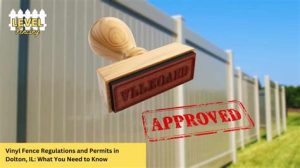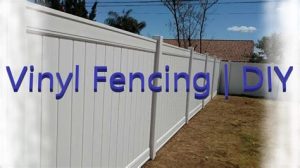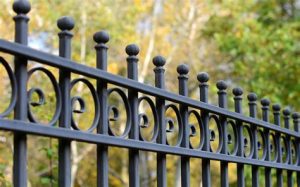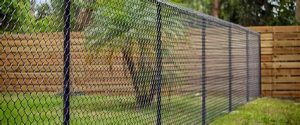Learn essential steps for a successful property installation, from assessment and material selection to execution and final inspection.When it comes to enhancing your property’s privacy, security, and aesthetic appeal, installing a fence is a popular solution. However, many homeowners wonder if this task can truly be accomplished in just one day. In this blog post, we’ll uncover the factors that determine the timeline of a fencing installation, from assessing your property and choosing the right materials to the essential preparation and planning steps. We’ll also dive into the execution of the installation process itself, and finish with tips for a thorough final inspection. By the end, you’ll have a clear understanding of what to expect when installing a fence and whether a swift one-day installation is realistic for your project. So, let’s get started!
Assessing the Property
Before beginning a fencing project, the first and crucial step is assessing the property. This process involves evaluating the landscape and understanding various factors that will influence the installation of the fence.
Start by determining the boundaries of your property. It’s essential to refer to property lines, which may require checking with local property records or hiring a surveyor. Knowing your exact borders helps to avoid any disputes with neighbors in the future.
- Check property boundaries and existing survey maps.
- Identify any easements or restrictions that may affect installation.
- Locate underground utilities using local services.
- Assess the terrain for any slopes, rocks, or roots that might complicate installation.
Additionally, consider how the fence will fit into the overall aesthetic of your property. Are there any nearby structures or landscaping that might influence the choice of fence style and material? These visual factors play a significant role in ensuring the fence complements your home.
Lastly, evaluate the purpose of your fence. Are you focusing on privacy, security, or simply enhancing the landscape? Understanding the primary function of the fence will guide your decision-making process regarding its height, style, and material, ensuring that the fence meets your needs while being compliant with local regulations.
Choosing the Right Materials
When it comes to building a durable and attractive fence, choosing the right materials is crucial. The materials you select will impact not only the aesthetic appeal of your fence but also its lifespan, maintenance, and overall functionality.
| Material | Pros | Cons |
|---|---|---|
| Wood | Natural look, Easy to customize | Requires regular maintenance, Prone to rot and pest damage |
| Vinyl | Low maintenance, Durable | Can be expensive, Limited color options |
| Chain Link | Cost-effective, Durable | Less privacy, Less aesthetic appeal |
| Aluminum | Lightweight, Corrosion-resistant | Can be costly, Less privacy compared to other options |
The above table outlines some of the most commonly used materials for fencing. However, the best choice ultimately depends on your specific needs and preferences. For instance, if you prioritize privacy, a wood or vinyl fence might be the best option. In contrast, if you’re looking for an economical solution that still offers security, chain link could suit your needs.
Additionally, consider the climate in your area. For example, wood may not be the best choice in regions with high humidity where it could rot more quickly. On the other hand, vinyl fencing is ideal for wet environments because it is resistant to moisture.
Lastly, don’t forget to check if there are any local regulations or homeowners association rules regarding fencing materials and styles. Adhering to these guidelines will ensure that your fence is compliant and avoids potential disputes with neighbors.
Preparation and Planning
Before diving into the exciting journey of fence installation, proper preparation and planning are essential. It can significantly impact the quality of the finished product, the timeline of the project, and overall satisfaction with your new fence. The first step in this process is to conduct a thorough assessment of your property.
- Know your property lines: Check property deeds or consult with a surveyor to avoid encroachment.
- Local codes and regulations: Research local zoning laws, restrictions, and permit requirements.
- Identify the purpose: Determine whether your fence is for privacy, security, or decoration; this will influence material choice.
- Choose the right materials: Select durable materials that match the style and requirements of your property.
Creating a proper project timeline is equally important. Allocate enough time for securing permits, purchasing materials, and scheduling labor if needed. By following a detailed plan, you can ensure a smoother installation process, keeping everything organized and on track for a successful fence construction.
Executing the Installation Process
Once you’ve adequately assessed your property and chosen the right materials for your fence, the next crucial step is executing the installation process. This phase requires attention to detail to ensure the fence is not only functional but also visually appealing.
- Gather all tools and materials: Before starting, ensure you have all necessary tools such as post hole diggers, levels, hammers, and screws. Having everything on hand saves time and ensures a smoother installation.
- Mark the layout: Use stakes and string to outline where the fence will go. This step is vital for visualizing the end result and ensuring that the fence is straight.
- Install the posts: Start by digging holes for the fence posts, ideally 2 feet deep. Place the posts in the holes and ensure they are level before filling the holes with concrete.
- Attach the panels: Once the posts have set, you can attach the fence panels. Make sure to check that each panel is level as you install them to avoid an uneven appearance.
- Finishing touches: After all panels are installed, walk along the fence to inspect for any loose screws or uneven sections. This is where minor adjustments can be made.
By following these steps, the installation process can be efficient and rewarding. It’s a common misconception that building a fence requires expert help; many homeowners can do this themselves if they are organized and prepared. Just remember that patience and precision are key!
Executing the installation process can indeed be achieved in one day, especially for smaller fences. However, factors such as weather conditions, availability of help, and your skill level can affect how long it takes. If you’re working on a larger project or with materials that require extra drying time, like concrete, planning for additional days may be necessary.
In summary, while a fence installation is feasible in a single day, make sure to factor in all variables. With the right tools, materials, and a solid plan in place, you’ll be well on your way to enhancing your property with a beautiful new fence!
Final Inspection and Completion
After the fence installation is complete, the final inspection is a crucial step that should not be overlooked. This phase ensures that everything has been done according to the plan and meets the desired quality standards.
- Alignment: Ensure the fence is straight and aligned properly with the property boundaries.
- Height: Verify that the fence meets local regulations regarding height restrictions.
- Stability: Test the stability of the posts and panels to ensure they are secure.
Once the initial inspection is complete, further actions are warranted. If any adjustments are needed, it’s best to address them immediately before proceeding with the final touches. Checking for necessary permits and ensuring compliance with local laws is also essential at this stage.
After any changes have been made and everything has been checked, the final completion process can begin. This often includes cleaning up the work area, removing debris, and applying any protective coatings to the wood or materials used in the fence. The goal is to leave the site not only functional but also aesthetically pleasing.
Ultimately, a diligent final inspection and thoughtful completion process can extend the life of your fence significantly, ensuring it stands the test of time while providing the security and visual appeal you desire.
Frequently Asked Questions
What factors determine if a fence can be installed in one day?
The factors include the type of fence, size of the property, the difficulty of the terrain, weather conditions, and the experience of the installation team.
What types of fences are generally easier to install quickly?
Vinyl and chain-link fences are often easier to install quickly compared to wood or wrought iron, which may require more time for cutting and assembling.
Are there permits needed before installing a fence?
Yes, in many areas, you will need to obtain local permits or check zoning regulations before installing a fence, which may affect the installation timeline.
How can preparation affect the speed of fence installation?
Preparation, such as clearing the area and marking property lines, can significantly reduce installation time and ensure that the project goes smoothly.
What should homeowners consider if they want a quick fence installation?
Homeowners should consider opting for pre-fabricated fence panels, hiring experienced installers, and scheduling installation during favorable weather conditions.
Can DIY installation be completed in one day?
Yes, a DIY fence installation can be completed in one day if the homeowner is skilled, chooses a simple fence type, and has the necessary tools and help.
What are the risks of rushing a fence installation?
Rushing a fence installation can lead to mistakes, improper alignment, and durability issues, ultimately resulting in additional costs and time to rectify the problems.





